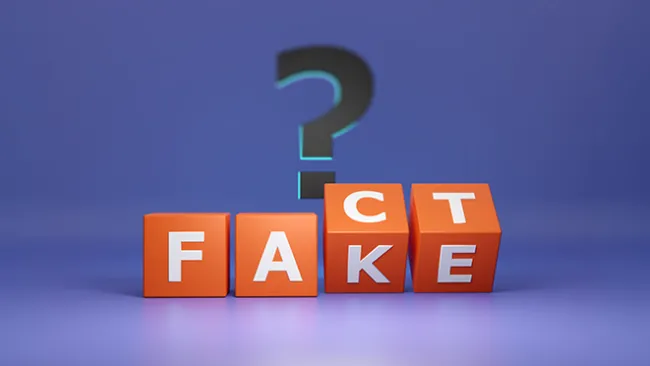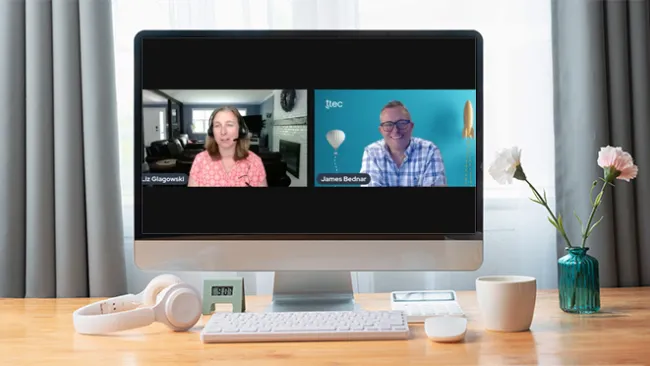Forward-thinking business leaders understand that exceptional CX is about continuously seeking better ways to use technology, data, and operations. Well, today, a question for many consumers is, “Why can’t I message this company in addition to calling or sending an email?”
We live in an omnichannel world, and customers expect the convenience and ease of conversational messaging to be part of their experience. We’ve been working with clients that understand how important messaging is to their customers and are incorporating the technology into their services. Ready to embark on your own conversational messaging journey? Here’s everything companies need to know to make conversational messaging an integral part of their customer experience.
1. How is conversational messaging different than live chat?
Chat is a dedicated interaction session where users must wait with the window open for the agent to respond, and if anyone closes the window, the session is canceled along with the customer interaction history (meaning users would have to start from square one again).
Messaging, on the other hand, allows for asynchronous, personal, and immediate communication between a customer and associate via a mobile phone SMS text platform like Apple’s Messages app, Facebook Messenger, or WhatsApp. This allows for an always-on connection to a brand, where previous conversations are saved and current conversations can happen as easily as a text message to a friend. Unlike more rigid chat sessions, conversational messaging works best when it’s quick, authentic, and personal. Consumers respond well when they know there’s another person on the other end of the message to quickly answer their question or provide information through links, videos, or images. This means that in addition to reliable technology, customer-facing associates hold the key to a successful conversational messaging program.
2. What are the customer behaviors/expectations that make conversational messaging compelling?

Messaging is fast, personal, and easy to use, making it an ideal communication channel for building relationships with customers. And it’s not a surprise that adoption rates have been skyrocketing: In 2019, billions of messages were sent from 2.5 billion mobile phone users who communicated through messaging apps. This figure is projected to grow to three billion users in 2022, according to eMarketer.
Companies who added messaging to their channel mix have seen:
- 20% higher CSAT than voice
- 95% channel retention
- 50% decrease in associate attrition
Through messaging, customers can have a conversation with company associates, get personalized customer support, read reviews, and click to purchase all from within messaging apps. Throughout the user experience, the consumer engages with a human representative, chatbot, or a mix of both. Simply put, messaging exists and thrives throughout the entire customer journey–from discovery to sale to service to re-purchase and loyalty-building.
3. What efficiencies should brands expect when redirecting volume to messaging?
This infographic outlines some of the many benefits conversational messaging can have for brands, such as real time communications and improved customer engagement. Companies recognize that by improving response rates for support issues and operational efficiencies for customer service workflows, the buyer’s journey will irrevocably improve. It is a real-time, enterprise conversational platform that can understand consumer intent, route consumers to the right agent (bot or human), manage agent workload, queue consumers, understand conversational sentiment and uncover trending topics. It is quickly adopted by consumers, with client results showing 50%+ coming back after the initial conversation.
For instance, Humanify Messaging delivers quick time to value. One of the easiest and fastest ways to get business results from the messaging platform is by shifting Interactive Voice Response (IVR) calls to messaging. Companies who have added messaging to their channel mix have seen a 20% higher CSAT than voice; 95% channel retention, and a 50% decrease in associate attrition.
4. What are the potential customer messaging missteps that we should be aware of?
Messaging is no doubt a powerful tool to interact with your consumers. However, there are a couple of things you want to keep in mind as you begin your journey. First, from an operational side messaging is much different than voice—which means your team of messaging agents must understand the differences before engaging with your customers especially if they are coming from a voice environment.
Many brands implement automation(bots) before they ever understand their customers’ intent. Having an automation strategy or understanding your customer’s intent before introducing automation will have a significant effect on the overall customer experience.
5. How long does it take to introduce conversational messaging into your multi/omni channel ecosystem?
There’s really no finite timeframe for introducing customer messaging. It all depends on your strategy and what solutions you’re looking to implement. Some solutions can be spun up fairly quickly while others that require some back-end integrations will take slightly longer. It’s important to understand that getting messaging into the hands of your consumers is one thing but doing it right from the start will have a positive impact on your customer’s journey with you.
Like any business communication channel or service, the key to messaging success is understanding and meeting your customers’ needs. The company that leads with customer experience strategy and design before technology will reap the rewards in today’s digital-first landscape.
Learn more about conversational messaging trends and best practices
We hope you enjoyed this post about conversational messaging, why customers demand it, and how to best deliver it. Here are additional conversational messaging content from our digital consulting and technology services experts.
Top 5 Conversational Messaging CX Gaps in Messaging and Chat: We mystery shopped some famous brands. In this infographic, see what we learned about their phone number, chat, messaging, and texting conversational experiences.
What We Learned When Investigating Mobile Messaging CX at 20+ Companies: To better understand the CX gap, we examined for ourselves what a typical mobile customer interaction is like, particularly when it comes to messaging and live chat via mobile. Our research team mystery shopped 27 companies from five different industries—e-commerce/retail, financial services, telecom, travel, and utilities. Our findings shed light on what today’s consumers typically experience when interacting with a brand via live chat and text messaging on mobile devices. Download our research white paper to access insights gleaned from our research and the next best steps to take to start improving the way consumers experience your brand in these channels.
Remote CX + Conversational Messaging equals A Perfect Pair: The growth of messaging as a preferred contact channel coincides with a shift to a work-from-home contact center model. What great timing, since messaging perfectly pairs with an at-home workforce. Learn how to combine messaging and remote operations to deliver amazing and effortless experiences.
Transforming Conversational Messaging into a Competitive Advantage: Consumers use messaging apps as a real time conversation and interaction space daily. And that preference is quickly bleeding into retail, commerce, and customer support. But while adopting a new channel like conversational messaging is one thing, doing it successfully is quite another. In this strategy guide, discover why your customers want to message you, the best ways to implement the evolving channel, and 6 key steps to achieve CSAT success.















